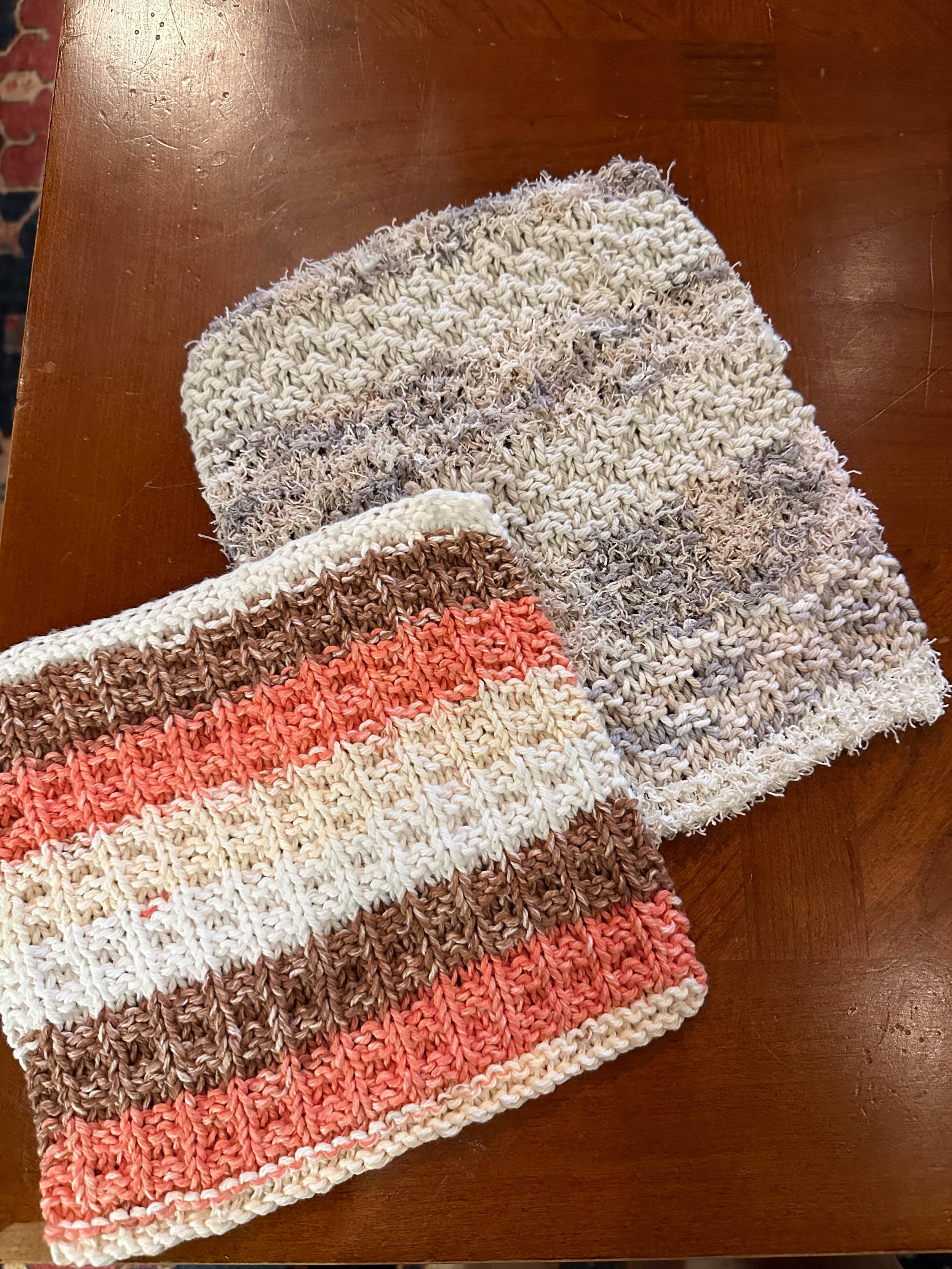Back to Work! The Comfortable Fit of Being Semi-Retired
The benefits of being semi-retired.
Trying on retirement.
Anyone who has retired, knows that after the “Congratulations! You’re going to love it!” handshakes, the next thing you’re bound to hear is: “What are you doing next?”
Eighteen months ago, when I retired from my school Speech-Language Pathologist position, my answer was “writing”, “grandkids”, and then “we’ll see what happens!”
Another frequent comment I heard, especially if someone knew my age, was, “Wow! Aren’t you lucky? Retiring so young!” That one triggered some guilt and embarrassment—making me feel I had landed on Easy Street before my “designated time.” While all my peers worked until age 65, I had baled early, having just turned 60.
We work for over half of our lives and then we retire. It’s impossible to know if retirement will fit our needs and lifestyle until we try it on. For some, it’s a perfect fit. For others, it may take time to adjust but it eventually feels right. Still others, like myself, may decide to try on yet another lifestyle, i.e. that of semi-retirement.
How retirement fit. And didn’t fit.
Now I’m fielding a new set of questions: “What made you go back to work?” and “Didn’t you like retirement?”
I’ll clear up that second one right away. I loved retirement! Without the demands of a full-time job, I had what seemed like all the time in the world.
I not only kept up with my blog posts and newsletters, but I also finished and self-published my first book, a Lenten devotional. Once a month on a Monday, I had the joy of babysitting my grandchild, which became plural—grandchildren—one year into retirement. Unfinished cross-stitch and knitting projects finally took the shape of a quilt, socks, and washcloths while I caught up on my TV watchlist. The 13-hour treks back and forth between our home in Michigan and our cabin in Minnesota allowed me to check several audiobooks off my TBR (To Be Read) list.
Our new “nest” in Minnesota provided lots of inspiration and a great place to write. It also kept me busy with a mile-long to-do list. With a revolving door of cabin guests and a little Airbnb business at our Michigan home, I washed more sheets and stripped and made more beds in one summer than I had in the previous 20 years.
I was writing, spending time with my kids and grandbabies, and was constantly busy.
Life was good. But the fit wasn’t entirely comfortable.
Without structure to my days, I started procrastinating. Feelings of guilt over having a leisurely schedule, retiring at “a young age”, and frittering away my time gnawed at me. Is this how other retirees feel? Should I be accomplishing more? (If you know anything about the Calvinist work ethic instilled in me while growing up, you might understand.1) Still, I was content and had no intention of jumping back on the hamster wheel of work.
The switch to “semi-retired.”
Which begs the second question: “What made you go back to work?”
The obvious reason almost anyone works is to make money, and my situation is no exception. We have at least two big home improvement projects on the horizon. Our Michigan home, which we built in 1997, is still protected (knock on wood!) by its original roof. Our Minnesota cabin needs a deck expansion to allow for safer exits and eliminate some sliding doors leading nowhere.
As my husband (in Michigan) and I (in Minnesota) chatted by cell phone one autumn evening, we considered our options in paying for those big-ticket items—i.e. borrowing from the bank or dipping into our retirement savings. Neither was appealing, especially since Tom is still working. He hesitated before saying, “Or…maybe you could get some part-time work.”
Earlier, I would have bristled at the suggestion. But, I had been un-gainfully unemployed for over a year, and my procrastination tendencies along with my Calvinist-work-ethic guilt—pushed me to reconsider. I could at least look into it.
My first online search at Indeed.com listed a job that immediately piqued my interest.2 Flexible hours, tailored to my needs. A familiar company whose platform I had used during the pandemic. And best of all, remote work! I wouldn’t have to leave the comforts of home I had grown used to. On a whim, I applied.
You know you’re in a high-need field when you can submit your resume one evening, complete a phone interview the next day, and within a few hours, have a job offer for as many hours as you want. There is a great demand for speech pathologists overall, and the schools in Michigan (where I am certified), desperately need SLPs to cover their student caseloads.
Overnight, I went from considering returning to the workforce (which admittedly, had been nudging at me for some time), to finding a perfect fit for my situation (working part-time from home or the cabin), to becoming semi-retired!
Like riding a new bike.
Although the job offer came quickly, my “onboarding” (which, back in the day, we called “orientation”) took some time. After hours of online training modules, my manager assigned me to two schools and then matched me with several middle and high school students needing speech therapy.
Returning to work has been like riding a bike—albeit, a new bike. I quickly recalled how to provide therapy, write IEPs, and present in meetings. The virtual platform I used during the pandemic was familiar too.3 However, not being in the building to meet people face to face, figuring out staff names and positions, and learning new documentation and billing systems have kept me on my toes.
The fit and benefits of semi-retirement.
Still, I have no regrets. At least seven bene-fits come to mind as I consider how semi-retirement fits my life today.
Family time. I’m free to talk to and visit my kids when I want, and my job as Lala is still secure.
Productivity. I’m working 15 hours a week which is enough structure to get me moving in the morning—just what I need to kick procrastination to the curb. Having less “free” time has made me use what I do have more wisely.
Finances. Now that I’m contributing to our bank account, I feel less guilt as Tom heads out the door to work, and freer to make the home improvements we need.
Brain function. Stretching my brain in familiar and fresh ways is invigorating and might improve my neurological health.
Flexibility. As I recover from hip surgery, the flexibility of remote work has been a godsend. An in-person position would have required several weeks of medical leave, whereas showing up online a few days after surgery has cured the monotony of being confined to my recliner.
Viability (at my age!). As for my age, I’m not too young to retire. (FYI, that’s a personal decision that has nothing to do with your age.) I’m also not too old to make a difference. I’m meeting a need by helping kids become more productive members of society with improved communication skills.
Feel-good perks. Those kids and their sweet faces on the other side of my laptop screen have endeared me to the idea of working again. I’ve enjoyed talking with and coaching them toward being better communicators. I didn’t realize I had missed this in my life!
No one-size-fits-all.
Just like there’s no right or wrong age to retire, there’s no one-size-fits-all plan for our mid-life and later years. There are various full-time, part-time, and no-time situations. Today’s options for working from home offer even more possibilities.
If we measure our needs, skills, lifestyle, and opportunities, we’ll soon figure out what fits. If we try it on and it doesn’t feel right, we can browse the employment rack for another option. And if nothing there fits, it might be time to slip into the comfort of retirement.
For me, at this time, semi-retirement is a comfortable fit. I hope to wear it well.
I’d love to hear where you are on the work vs. retirement journey—are you fully retired, semi-retired, or just dreaming of the day? How does your situation fit you now, and what benefits have you discovered?
1 What Wikipedia says about the Calvinist (or Protestant) Work Ethic.
2 Indeed.com is an online job recruiter. It also happens to be my oldest child’s employer.
3 My new employer is Presence (a.k.a. Presence Learning), a national teletherapy service provider that employs over 2000 clinicians (OTs, SLPs, and mental health providers) and serves over 10,000 schools. If you’re interested in employment opportunities, let me know. I’d love to make a referral!






